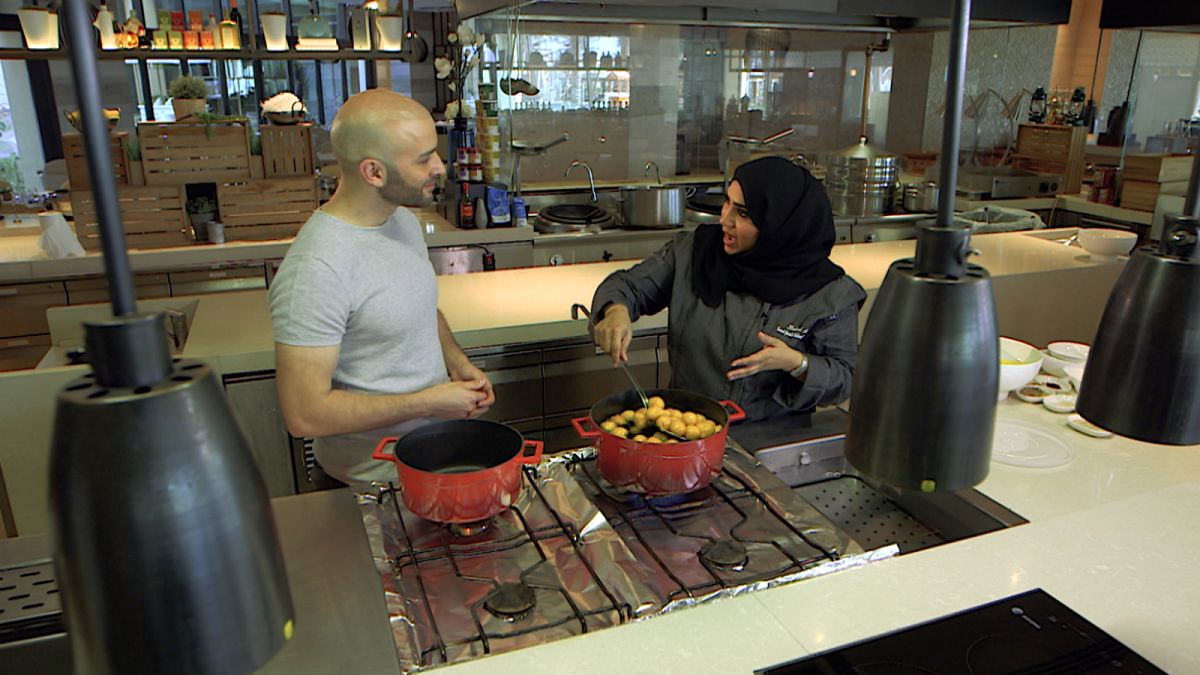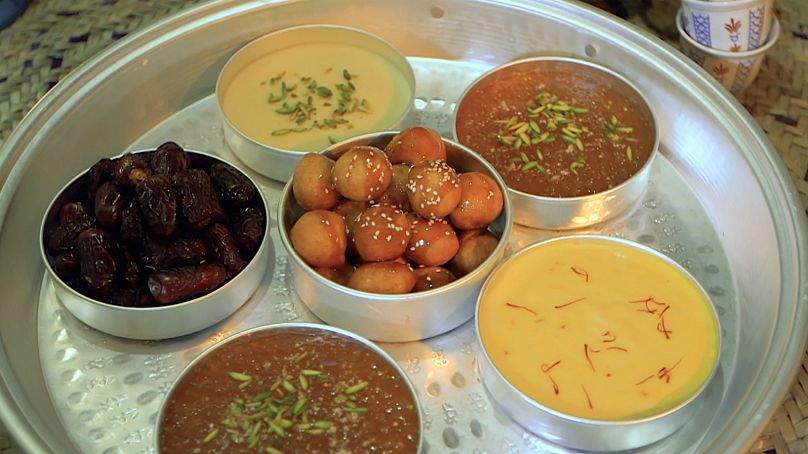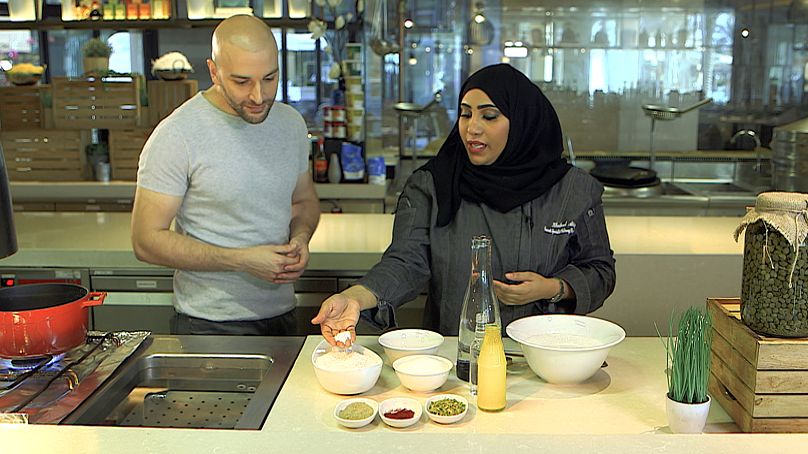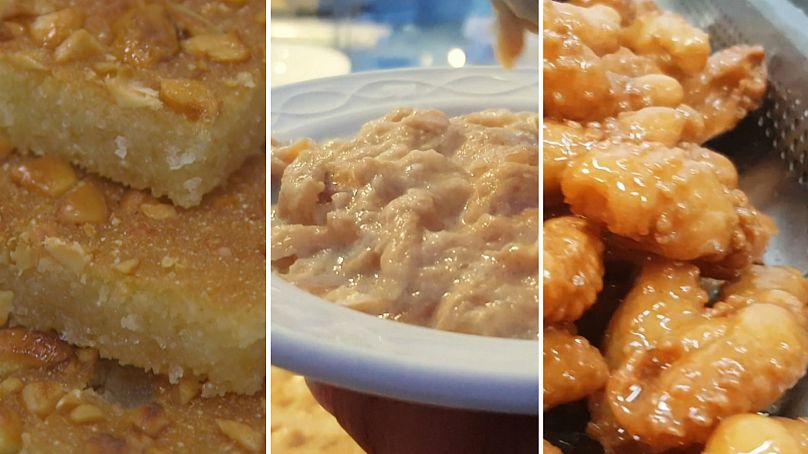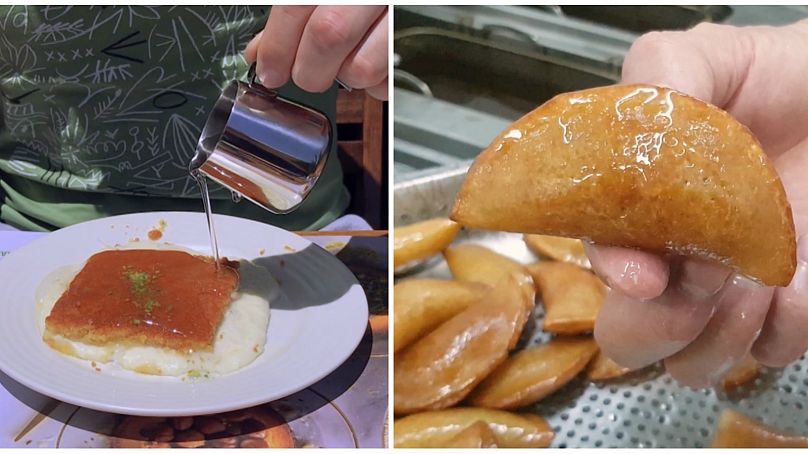In the Middle East and North Africa, homemade sweets and confectionary are gestures of welcome and celebration.
In the Middle East and North Africa, homemade sweets and confectionary are gestures of welcome and celebration.
Across Arab countries, desserts subtly differ in style and composition.
Whilst some of the most internationally known Arabic sweets come from the Levant region, Gulf countries like the United Arab Emirates also value their traditional deserts.
UNITED ARAB EMIRATES
Logaimat, meaning ‘small bites’ in Arabic, is one of the UAE’s most popular delicacies.
The dessert is made of crispy dough spheres, covered in a molasses syrup, and sometimes topped with sesame seeds.
Some of these ingredients were considered hard to come by in the past, says UAE chef Khulood Atiq, who’s been cooking her country’s cuisine since the age of eight.
“Before, they didn’t have sugar, so they would always serve dates,” she explains, “They would take dates and soak them in water and make a base - then they kneaded it into the sweets.”
The chef adds that what characterises Emirati cuisine is the simplicity of its preparation and the integration of local ingredients, such as butter flavoured with cumin seeds, fennel or flour.
Another typical Emirati sweet is sagaw, a gelatinous dessert which originates from the sago palm tree, native to southern Japan.
The main ingredient reached the UAE during the height of the pearl trading industry.
The trade route also gave the country more access to foreign ingredients like saffron, which over time has become a staple of Emirati cuisine.
In UAE households, desserts are traditionally ready to serve at all times, in anticipation of guests. They are displayed on a sarroud, or large, round hand-woven palm leaf mat.
EGYPT
Egypt is particularly known for its wide variety of sweets. Amongst the best-known are semolina wheat cakes called basbousa, which are sweetened with rose water and topped with almonds.
There are also a number of deserts inspired by women, like ‘um Ali’, meaning the 'mother of Ali' in Arabic, which is a sweet bread and milk pudding filled with nuts and raisins - baked to a golden crisp.
Another popular sweet treat is something called Zainab's fingers, which is served after sunset in Ramadan. The doughy delights are made with orange blossom and aniseed, then deep fried until crispy on the outside and soft in the middle.
LEVANT REGION
Levantine cuisine, which is mainly found in countries like Lebanon, Syria, Palestine and Jordan, has a signature dessert called kunafa. It’s a pastry soaked in sugar syrup, layered with cheese and coated with pistachios.
Another much-loved Levantine desert is qatayef, a dumpling commonly served during Ramadan. The folded mini pancake is packed with either crushed nuts or sweetened cheese, before being fried and brought to the table after a day’s fasting during the Holy Month.
SEEN ON SOCIAL: SWEET TEETH
Mohamed shared this video of a kunafa being assembled in the South of Lebanon
And Razya excitedly awaits a serving of her favourite childhood sweets - logaimat dumplings drizzled in date syrup.


